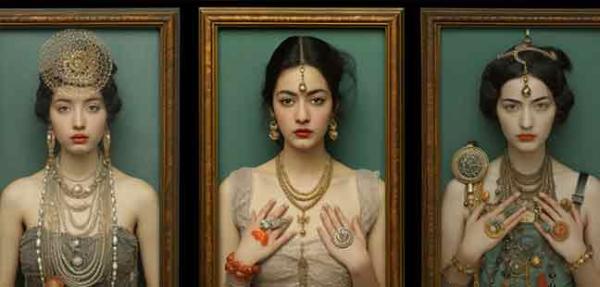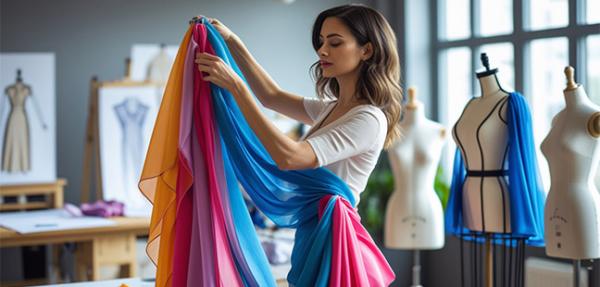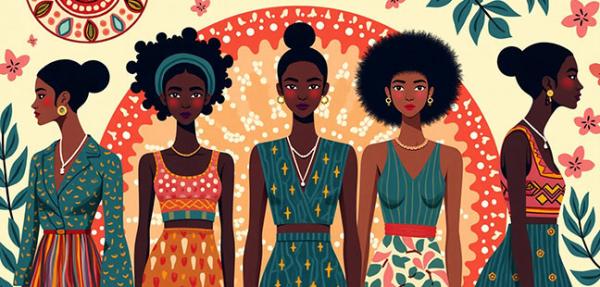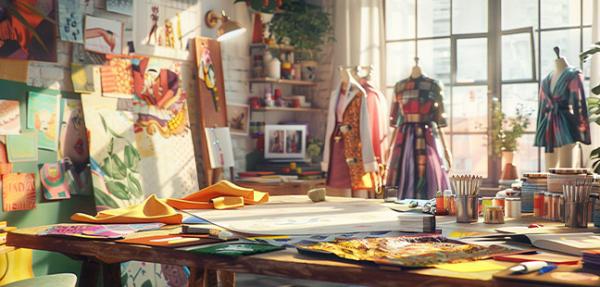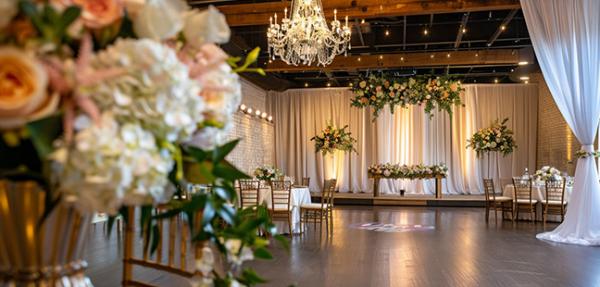What are the different types of fabric in Fashion Design?
- Pearl Academy Editorial Team
- Published 20-Jan-2025
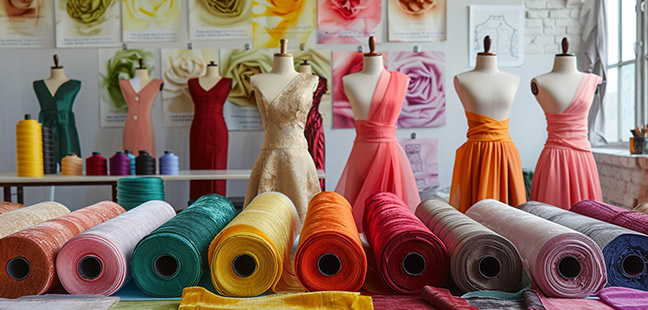
Table of Contents:
Fashion design is a creative world where fabric is your canvas. Understanding the properties, textures, and uses of different fabrics is crucial for any aspiring fashion or textile designer. If you're passionate about creating garments that make a statement, then mastering fabric is one of the first steps to success.
Here's a blog on some essential fabrics every designer should be familiar with, and how Fashion Design or Textile Design degrees can help you become an expert.
Become future-ready with our Fashion Programs
Know More“When You Don’t Dress like Everyone Else, You Don’t have to Think like Everyone Else,”
- Iris Apfel
The Role of Fabrics in Fashion Design
Fabrics are more than just the building blocks of clothing—they are an integral part of fashion design that shapes the outcome of any creation. Whether it's the flow of a silk dress or the structure of a wool coat, the choice of fabric can make or break a design.
As a designer, understanding the properties of different fabrics—such as texture, weight, stretch, and drape—allows you to manipulate them effectively in your designs. Leading fashion designers spend significant time experimenting with various fabrics, ensuring that the material complements the design's form and function.
Key Fabric Categories Every Designer Should Know
Fabrics fall into three main categories: natural, synthetic, and blended. Each type offers unique characteristics that serve different design needs.
1) Natural Fabrics
- Cotton: Known for its breathability, cotton is a versatile fabric perfect for casual wear, summer dresses, and comfortable pieces.
- Silk: Luxurious and elegant, silk is highly sought after for evening wear and formal garments, providing a smooth, flowing appearance.
- Wool: Known for its warmth and durability, wool is ideal for outerwear, suiting, and knitwear.
- Linen: Lightweight and sustainable, linen is often used in summer collections and is valued for its eco-friendly properties.
2) Synthetic Fabrics
- Polyester: Durable and cost-effective, polyester is commonly used in fast fashion and sportswear for its quick-drying and wrinkle-resistant qualities.
- Nylon: With great strength and stretch, nylon is favored for swimwear, activewear, and hosiery.
- Acrylic: Mimicking the softness of wool, acrylic is often used in knitwear and cold-weather garments.
3) Blended Fabrics
- Cotton-Polyester Blend: This combination offers the softness of cotton with the durability of polyester, making it a popular choice for everyday wear.
- Silk-Wool Blend: For luxury winter wear, a silk-wool blend provides warmth without sacrificing elegance.
Specialized Fabrics in High Fashion
For designers entering the world of high fashion, some fabrics stand out due to their unique properties and applications:
- Chiffon: Lightweight and sheer, chiffon is perfect for evening dresses and delicate, flowy garments.
- Tulle: Commonly used in bridal wear, tulle adds volume and elegance to dresses, especially for special occasions.
- Denim: This classic fabric continues to evolve, now being used in both casual and high-fashion collections.
- Velvet: Rich and opulent, velvet adds texture and depth to winter collections and couture pieces.
- Organza: Light and crisp, organza is used to create structured designs that make a bold statement.
Importance of Fabric Knowledge in Fashion Education
Fabric selection plays a crucial role in determining how a design comes to life. In a B.Des in Fashion Design or B.Des in Textile Design program, students delve deep into the world of fabrics, studying everything from basic fabric properties to advanced textile innovations.
These programs teach students how to select the right fabric for their designs, considering factors like the garment's silhouette, intended use, and fabric behavior. Learning about different fashion designing subjects, including textile science, helps designers select the right fabric for their creations. Additionally, hands-on labs and projects provide students with real-world experience in fabric manipulation, dyeing, printing, and embroidery.
If you're considering a career in fashion design, understanding fabrics is just one part of the journey. Learn more about fashion designing courses, their fees, and duration in this comprehensive guide.
Photographing Your Designs and Showcasing Them Effectively
Once you've mastered fabric selection and crafted your garment, it’s essential to showcase your work through photography. Capturing the essence of your design requires the right equipment to highlight the fabric's texture, drape, and color.
Learn more about how to choose the right photography equipment to showcase your designs in the best light. Read our guide on how to choose the right photography equipment and ensure your designs are photographed professionally.
Fabric Innovation and Sustainability
With growing awareness around sustainability in fashion, eco-friendly fabrics are becoming increasingly popular. As a designer, it’s important to stay ahead of trends by understanding the latest innovations in textile technology.
Eco-Friendly Fabrics
- Bamboo: A highly sustainable fabric, bamboo is soft, breathable, and biodegradable, making it a favourite for eco-conscious designers.
- Hemp: Known for its durability and minimal environmental impact, hemp is becoming more common in a sustainable fashion.
- Recycled Polyester: Created from recycled plastic bottles, this innovative fabric helps reduce waste in fashion.
Fashion designers specializing in Textile Design often focus on sustainable practices, using these innovative fabrics to create designs that are both environmentally responsible and cutting-edge.
Pursue a B.Des in Fashion Design or Textile Design
A solid foundation in fabric knowledge is essential for success in the fashion industry. A formal education, like a B.Des in Fashion Design or B.Des in Textile Design equips you with the skills you need to master fabric science and textile design.
Why enroll in a B.Des Program?
- Comprehensive Curriculum: Learn fabric science, textile innovation, and sustainable design practices.
- Global Exposure: Chance to study at partner universities in the UK and Australia, to embark on global opportunities for student immersion.
- Hands-On Experience: Work with fabrics in real-world design scenarios, from garment creation to textile manipulation.
- Career Opportunities: Graduates can pursue careers as Fashion Designers, Textile Designers, Fabric Consultants, and more, in industries ranging from haute couture to sustainable fashion.
A B.Des in Fashion Design not only prepares you for a creative career in design but also equips you with the knowledge needed to become a fashion entrepreneur. Check out our blog on how to become a fashion entrepreneur for more information.

Student Guidance Center: Our Counselors are Just a Click Away.
Conclusion
Fabrics are the soul of any fashion design. From cotton and silk to chiffon and velvet, knowing how to select and manipulate the right fabric can elevate your designs to new heights. For aspiring fashion designers, mastering fabrics is a crucial step toward building a successful career.
By pursuing a degree in Fashion Design or in Textile Design, you’ll gain the essential skills and knowledge needed to navigate the ever-evolving world of fashion. Start your journey today and become the fabric expert every designer dream of!
Pearl Academy Editorial Team
Tags
- #Fashion
Pearl Admission Enquiry
Subscribe to Pearl Blogs
By clicking the "Subscribe" button, I agree and accept the privacy policy of Pearl Academy.
















